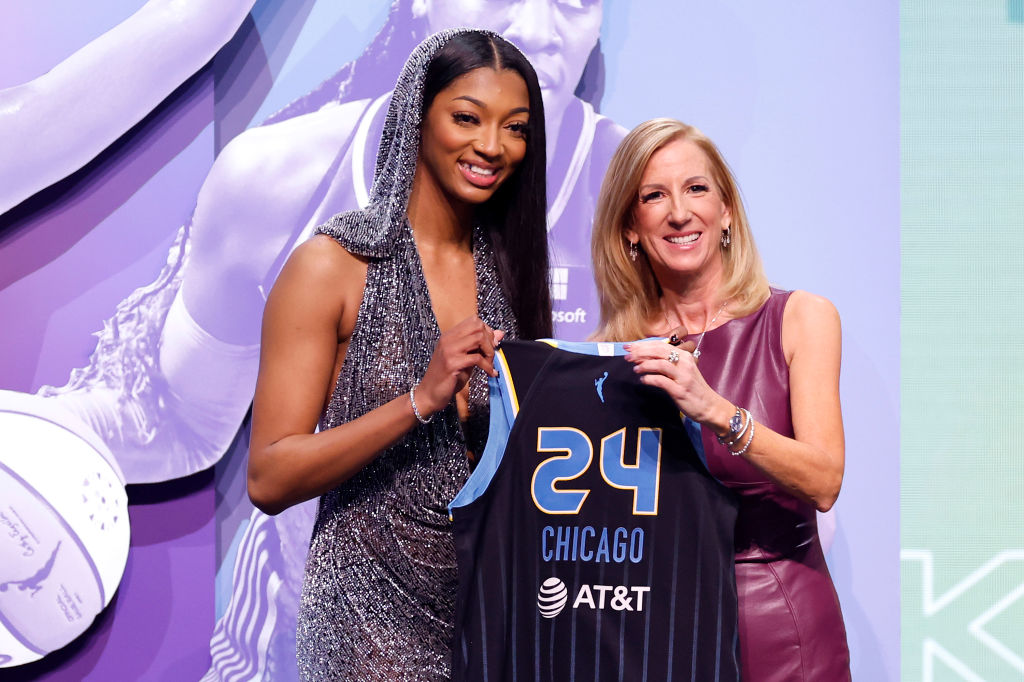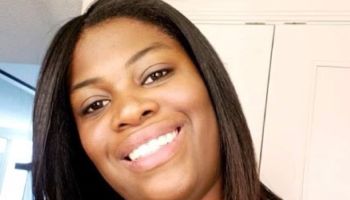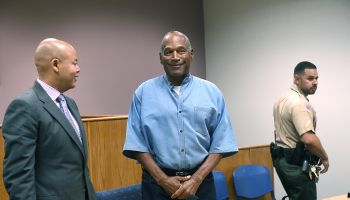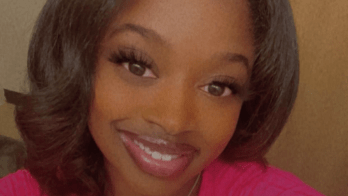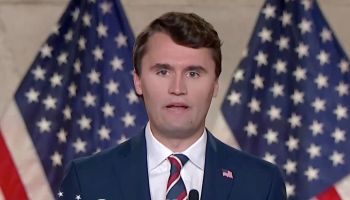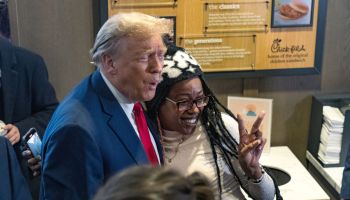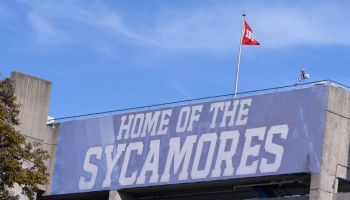I was a fan first.
Before I had the chance to talk and laugh and join him in his world, I was a fan of Notorious B.I.G.. From “Juicy,” “Warning,” “Unbelievable” and “One More Chance” to “Things Done Changed,” “Dreams…,” and all the cameos and remixes, there was a lot of music to love. I actually played “Get Money” so often that the vinyl began to sound dead, and I remember rushing to the club the night I got “Hypnotize” so I could blow it up three or four times in a row.
It was fun. Fun to hear his growls at the beginning of records and to mimic the way he slurred some of the words in his rhyme. I loved watching him play the playa role in a ridiculously huge suit and enjoyed dancing all night to his tracks with women who loved his “Big Poppa” steelo. And when he rose out of bed, naked and unashamed, roaring down the phone in all of his 300-pound glory in the “Warning” clip, I knew that for now and always, Big was a star.
In February 1997, a few weeks before his death, I was assigned to do a feature for Trace magazine on the life and times of Biggie Smalls. I was determined to write a piece that kept clear of what I saw as the bullshit controversy surrounding his life: the drug busts and criminal charges, the hoopla around Lil’ Kim, the break-up with his wife Faith, and of course the conflict with Tupac Shakur.
I wanted to see what was behind all that, concentrate on the music, and explore some of the peculiar dilemmas that the nineties have held for African-Americans. See, for many of our young folk, Big was a hero. A hero because he gave expression to the thoughts and feelings of those who have never been heard. Biggie, as the best hip hop artists do, narrated as artistic fantasy what for so many, is a cultural reality. And that is essentially, the nature and purpose of the art form.
Like the blues, jazz and the best of African-American art, hip hop is one person’s expression of self that is representative of some part of ourselves. Big was Brooklyn’s finest, the brotha who dedicated his album to “all the teachers that told me I’d never amount to nothing…and the niggas in the struggle.” And he was a real person.
I remember the first night I spent with him, his peeps and I laughed for hours about his exploits on the road. Stories of Luke, Shaq, and rolling with R. Kelly had us in tears about as much as the numerous sex tales of groupies along the way. But there was no pretentiousness, no over-confidence, no cocky mask to hide any deep-seated insecurity. Big let you love him or leave him alone. And it was hard to do the latter because as he said so often: “To know me is to love me.”
“Dolly My Baby (Remix)”
But those who have the least, have to sing the loudest. So it was no surprise that Chris Wallace, former hustler, former dealer, former survivor, frequently expressed in his music the anger and frustration inherent in a life from the ‘hood. And the materialism. For over the past two decades, the most significant shift in the culture of African-Americans has been that we have fallen victim to the individualism and greed that have always defined the larger American society.
James Baldwin once asked in his classic discussion of the Civil Rights Movement, The Fire Next Time, “Do I really want to be integrated into a burning house?” Without ever answering, black folks find ourselves today within that burning house, robbing and stealing and “going for mine” either on Wall Street in a Ralph Lauren three-button suit or on the streets of Brooklyn in a Korean-made Polo sweatshirt. Biggie wasn’t ashamed about being in hip hop for the money. And why should he be? Goldman Sachs makes no apologies. Everything we learn and are taught by America tells us to go for the paper because with money there is success and happiness. Don’t try to improve your community or change the ghetto, just buy your way out. By any means necessary. And Big did that through hip hop.
A generation ago, Chris Wallace wouldn’t have had a chance to make “tremendous cream.” There wouldn’t have been a space for a “Notorious B.I.G.” or a “Biggie Smalls” or a “Puff Daddy.” And a generation ago, our parents feared we would be killed by someone in a white sheet, not someone that looks like us. So where are we now? And who’s to blame?
“Juicy”
Do we blame rappers themselves for often talking about the worst of their environments or the media industries for promoting and selling unhealthy words and images? Do we blame the parents who are not around to teach and guide their children or the kids who don’t take responsibility for their own actions? Do we blame an indifferent white government or ineffective black leadership? Or shouldn’t we just blame ourselves as a collective?
If I asked my former students, twelve and thirteen year-olds living in inner-city Baltimore, how many of them had seen or known someone who had been killed, every hand would go up. And so the drive-by murder of Biggie Smalls becomes not an anomaly, but a part of the macabre reality we call black life.
Hip hop is the primary way we are all socialized. In the absence of a strong family unit, the church, or any reliable systems of education, young people learn how to talk to each other, treat each other, and feel about themselves and their world using the rhymes they listen to every day.
The tragedy about the death of B.I.G. is here was a young brotha struggling to figure himself out. Life After Death represented for him a new beginning. A path away from a life he knew to be self-destructive, but one which until recently, he was unable to escape. That is not to say his second album is free of the pathos that made him so Ready to Die, but there is a growth there. A progression he would have continued in his music, a journey that so many young people could have learned from.
“Warning”
Big wanted to be alive, to laugh and cry and act out the lessons he had learned from his past. He also wanted to love. Love his children, his fam, and his moms. Mrs. Wallace was all over Ready to Die. She was an object of stress and bitterness, but also a symbol of strength and survival. Big spoke of her in his rhymes more than any other rapper I know–except of course, Tupac.
Many will point out that Biggie and Tupac’s deaths are more examples of life imitating art. But aren’t we all on stage? Murder is often the leading cause of death for young black men and most of us do very little about it. Can that be a reality? It seems that we have become increasingly unable to differentiate between fantasy and what is real. And for that reason, our art is our life.
Hip hop is our dominant culture, and it’s the way we learn how to live. Kids act like the stars they see in their favorite videos, and find a rhyme for the situations that confront them every day. That power of the art form surprises even many of those who wield it. It’s what makes hip hop so compelling, but aren’t we allowing ourselves to be entertained by our own tragedy?
Tupac, in his martyrdom, became a cultural hero. Biggie will be the same. Tupac asked brothas to die for him…Big found new life. But ultimately, the music couldn’t save either of them.
